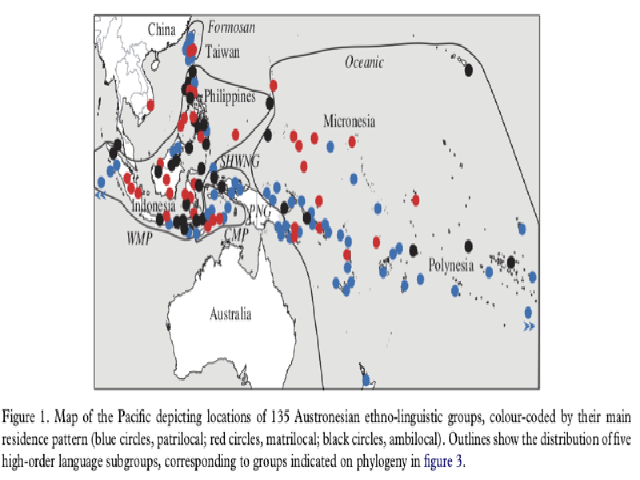Matrilocal residence is ancestral in Austronesian societies

Authors:
Citation:
Details:
Published: 3 March, 2009.
Download:
Abstract:
The nature of social life in human prehistory is elusive, yet knowing how kinship systems evolve is critical for understanding population history and cultural diversity. Post-marital residence rules specify sex-specific dispersal and kin association, influencing the pattern of genetic markers across populations. Cultural phylogenetics allows us to practise “virtual archaeology” on these aspects of social life that leave no trace in the archaeological record. Here we show that early Austronesian societies practised matrilocal post-marital residence. Using a Markov-chain Monte Carlo comparative method implemented in a Bayesian phylogenetic framework, we estimated the type of residence at each ancestral node in a sample of Austronesian language trees spanning 135 Pacific societies. Matrilocal residence has been hypothesized for proto-Oceanic society (ca 3500 BP), but we find strong evidence that matrilocality was predominant in earlier Austronesian societies ca 5000–4500 BP, at the root of the language family and its early branches. Our results illuminate the divergent patterns of mtDNA and Y-chromosome markers seen in the Pacific. The analysis of present-day cross-cultural data in this way allows us to directly address cultural evolutionary and life-history processes in prehistory.